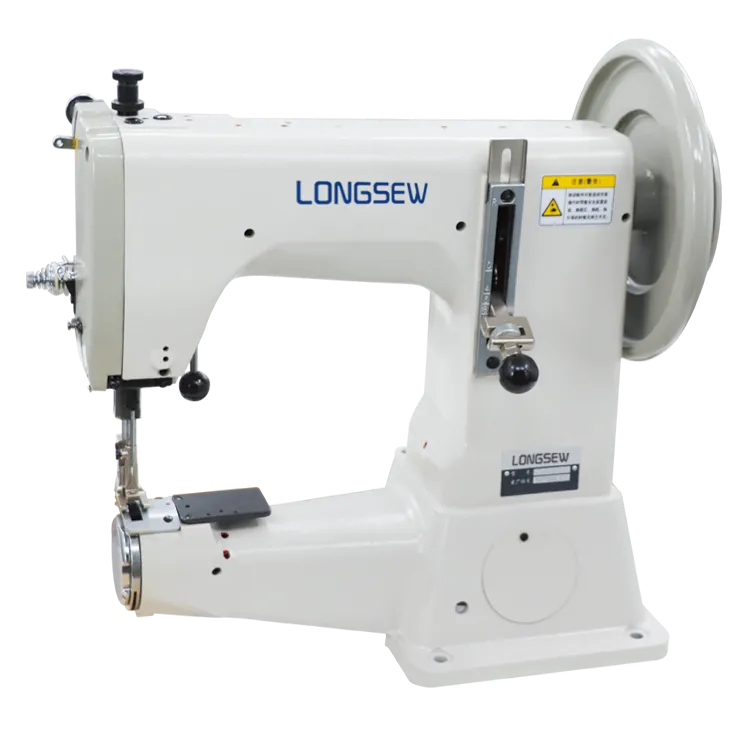Automated Stitching Machine for Efficient Fabric Assembly and Seamless Production
The Evolution and Significance of Automatic Stitching Machines
In the world of textile manufacturing and garment production, efficiency and precision are paramount. One of the most significant advancements that has contributed to these aspects is the automatic stitching machine. The evolution of this technology has revolutionized the industry by reducing labor costs, increasing production speed, and enhancing the quality of the finished products.
Historical Perspective
The origin of stitching machines dates back to the early 19th century, when Elias Howe invented the first practical sewing machine in 1846. This invention, however, was just the beginning. As the demand for mass-produced clothing grew, so did the need for faster and more efficient sewing machinery. The introduction of automatic stitching machines in the late 20th century marked a major turning point in fabric and garment manufacturing. These machines, designed to perform a variety of stitching operations without direct human intervention, brought about a new era in industrial sewing.
How Automatic Stitching Machines Work
Automatic stitching machines utilize advanced technology to perform various tasks. Equipped with computerized controls, these machines can execute complex stitching patterns with high accuracy. They are programmed to handle multiple operations such as sewing, cutting, and trimming, all in one seamless process. The machines often incorporate features like automatic thread tension adjustment, needle positioning, and speed variations, allowing for a diverse range of fabrics and designs to be processed efficiently.
The integration of sensors and feedback mechanisms further enhances their performance, enabling real-time adjustments to be made during operation. This ensures not only a consistent product quality but also minimizes material waste and production time.
Benefits of Automatic Stitching Machines
The advantages of automatic stitching machines are manifold. Firstly, they significantly reduce labor costs by minimizing the need for skilled workers to perform repetitive tasks. In an industry where labor is often one of the highest costs, this efficiency translates into substantial financial savings for manufacturers.
auto stitching machine

Secondly, speed and productivity are key benefits. An automatic stitching machine can often complete tasks at a rate several times faster than an individual worker. This increased output is essential for meeting the demands of a fast-paced fashion market, where trends can change overnight.
Furthermore, these machines contribute to improved product quality. The precision of automatic stitching reduces the likelihood of human error, leading to better seam strength and a more polished appearance. The consistent application of stitching patterns and techniques ensures that every item produced meets the same high standards.
Challenges and Considerations
Despite their numerous benefits, automatic stitching machines are not without challenges. The initial investment cost for such advanced machinery can be significant, posing a barrier for smaller companies. Moreover, the transition from traditional to automatic systems requires adequate training and adaptation. Workers must become familiar with the operation and maintenance of these machines, which can be a time-consuming process.
Additionally, while automation leads to efficiency, it can also reduce the number of entry-level jobs within the industry. As businesses streamline their operations, there exists a concern over job displacement, particularly for those in low-skill roles.
The Future of Automatic Stitching Machines
Looking ahead, the future of automatic stitching machines seems promising. As technology continues to evolve, we can expect enhancements in terms of artificial intelligence and machine learning capabilities, allowing for even more sophisticated operations. Innovations such as IoT (Internet of Things) will likely lead to smarter machines that communicate with one another, optimizing production lines and enhancing supply chain management.
Moreover, as sustainability becomes an increasingly pressing issue, the focus may shift towards developing eco-friendly stitching machines that use less energy and create less waste. This would not only benefit manufacturers but also resonate with environmentally-conscious consumers.
In conclusion, automatic stitching machines are a cornerstone of modern garment manufacturing, offering significant efficiency and quality improvements. While they present some challenges, their potential for future innovation is vast, promising a continuously evolving landscape in the textile industry.
-
Heavy Duty Leather Sewing Machine: A Must-Have for Professional LeatherworkNewsMay.28,2025
-
Leather Sewing Machine: Essential for High-Quality LeathercraftNewsMay.28,2025
-
Extra Heavy Duty Sewing Machine for Premium Leather ApplicationsNewsMay.28,2025
-
Walking Foot Cylinder Arm Sewing Machine: Precision and Power CombinedNewsMay.28,2025
-
Industrial Cylinder Arm Sewing Machine: Engineered for High-Performance StitchingNewsMay.28,2025
-
Cylinder Bed Sewing Machine: A Powerful Solution for Precision StitchingNewsMay.28,2025
-
Zigzag Sewing MachineNewsMay.12,2025





























